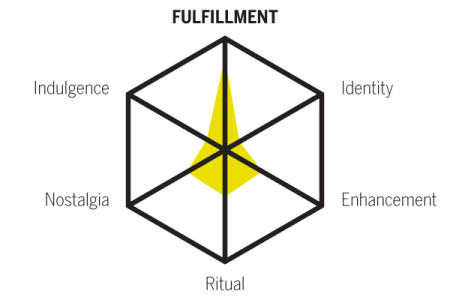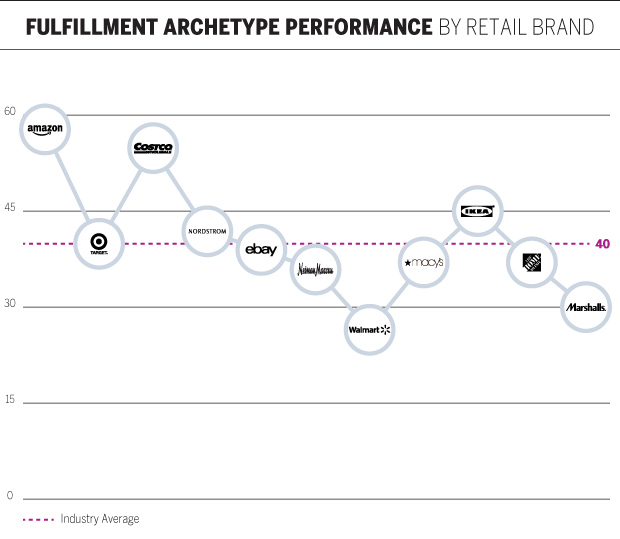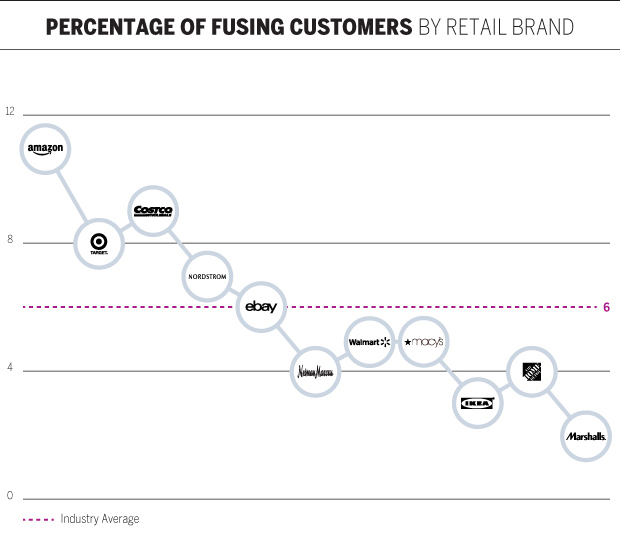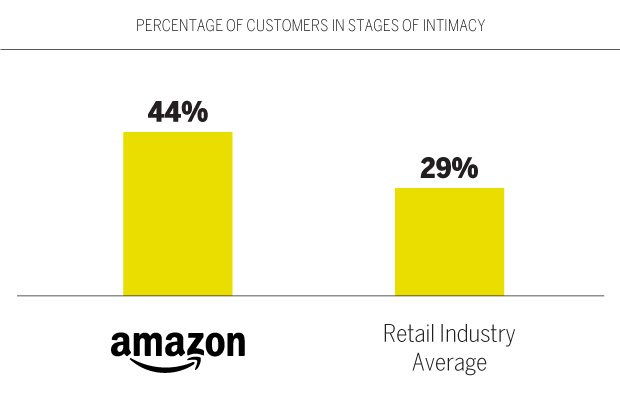The Amazon brand has not only built a unique business proposition (retail, cloud services, entertainment, technology), but it also dominates part of our Brand Intimacy Report and Rankings. If we asked you to think about the warm and fuzzy attributes the Amazon brand connotes, could you name any? Probably not. So how does it perform so well in driving what ultimately matters most—how consumers feel about the brand?
Moreover, how does Amazon lead our retail category in the annual Brand Intimacy study, which ranks brands driven by their emotional connection? Is it performing some brand ‘mind tricks’ that have been concocted in its labs along with drone delivery squadrons? Can any retail brand, online or otherwise, catch Amazon? What drives its unique blend of brand performance?
To answer those questions, we dug a little deeper into our research findings seeking clues and a hypothesis.
First, a little background on what we mean by Brand Intimacy. Through recent advances in neuroscience and psychology, we have a better understanding of the decision-making process. We now know emotion is the driver of decisions, and our rational minds retrofit our selections after the fact. Furthermore, behavioral science suggests how we feel about a brand is the best predictor of behavior.
Brand Intimacy is at the heart of this new thinking. We have been studying it for several years, initially by understanding shifts and updates in the worlds of technology, marketing, and science, and then by undertaking in-depth, qualitative, online communities research to better explore and understand the very idea of Brand Intimacy. This resulted in over 20,000 brand stories across the United States, Germany, and Japan. Finally, we have completed quantitative research with 6,000 consumers, encompassing 52,000 brand evaluations in the United States, Mexico, and the UAE to validate and better understand the implications and performance of intimate brands.
The core of measuring Brand Intimacy is our Quotient model, comprised of four stages that result in a Brand Intimacy Quotient Score (a score from 0-100; higher is better). You can review a detailed description of the model and how it works here. The video below also provides a brief overview of the process.
Central to the model are the archetypes. These six archetypes are consistently present, in part or in whole, among all intimate brand and identify the character and nature of ultimate brand relationships. In retail, the fulfillment archetype dominates. Fulfillment is defined as exceeding expectations, by delivering superior service, quality, and efficacy.

As an online retail pioneer, Amazon delivers fulfillment from simultaneously tinkering narrowly around every pixel of the customer journey to broadly expanding the ecosystem of influence and boundaries of what you can effortlessly buy and have shipped to your door. This experience drives the feeling of confidence and trust within Amazon’s customers.
Below is a chart showing our top-ranked retail brands (in order of ranking) and their archetype scores for fulfillment. Amazon clearly leads the field, and aside from Costco, the rest are at or below the industry average for this archetype.

We’ve also learned that retail brands that score well in fulfillment, the retail category archetype driver, generally have a larger percentage of fusing stage relationships with their customers.

Fusing is the highest stage of intimacy, when a consumer and a brand become inexorably linked and co-identified. In this stage, the identities of the consumer and the brand begin to merge and become a form of mutual realization and expression. Why does this matter? Our research has revealed that the higher the percentage of fusing customers a brand has, the greater propensity consumers have to pay more for its products. In addition, intimate brands endure and outperform the S&P and Fortune 500 indexes in profit and revenue over ten years.
Amazon is winning in Brand Intimacy by building stronger bonds with its customers, and that bodes well for its future success. Amazon outperforms the category against the archetype that matters most, which has driven a strong 44 percent of its customers to experience some form of intimacy with the brand. By comparison, the category average is 29 percent (see below).

Amazon also leads our research as the favorite brand of millennials (18—34 year olds) and those who make between $35,000 and $75,000 per year. If that isn’t convincing enough, note that Amazon is trusted more than any other online retailer 1, that it invested nearly $10 billion last year in R&D2, and that its cloud services division will soon eclipse the operating profit of its retail business3, and you can quickly see that its dominance is only beginning.
Like most large companies ($50 billion in revenues and counting), there is no simple explanation for Amazon’s success. It is rare, however, to see such brand strength from a company that seems to do so little to articulate itself from a marketing and communication perspective. When was the last time you saw an Amazon advertisement?
As noted earlier, Amazon is able to deliver on fulfillment, the archetype that drives the category. It offers superior service by being reliable, anticipatory and, most importantly, delivering value (savings). By knowing its customers’ profiles and suggesting appropriate items, it gains traction. By delivering flawlessly it creates an addictive pleasure. It exceeds expectations by continually innovating, evolving, and expanding its offerings. Through mastering logistics and the supply chain, Amazon is able to dis-intermediate how products arrive in its customers’ hands. Amazon Prime further motivates customers with a new kind of loyalty that provides discounts on delivery (both time and money) as well as offering entertainment options.
By being pervasive, direct and peerless in fulfilling customer needs, Amazon has established itself as essential. It has become a new brand staple in people’s lives, something upon which they depend. Although it does not promote an emotionally-oriented brand promise, the Amazon brand, indeed, has anchored itself squarely in the hearts of its users, becoming a brand they feel connected to and that they identify with.
Brand Intimacy and Amazon? Most definitely.
To download the full Brand Intimacy 2015 Report or explore the Ranking Tool, please visit: mblm.com/brandintimacy/.
Read our detailed methodology here and review the sources cited in this article here.
To learn more about MBLM, click here.
